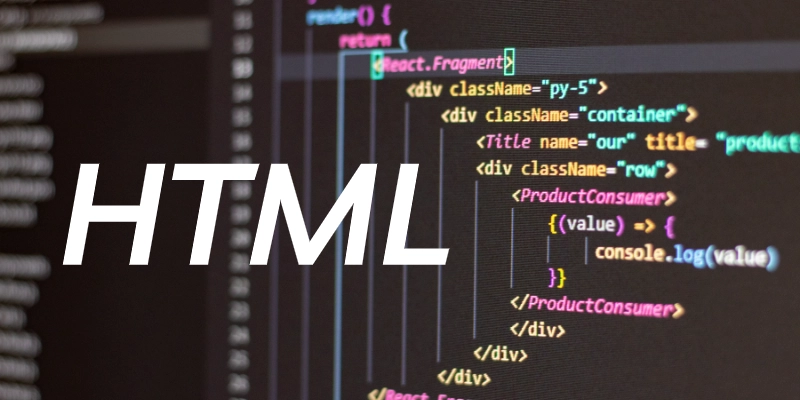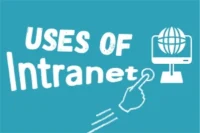Complete HTML Guide: Learn HTML from Basics to Advanced
Published: 2 Jul 2025
HTML (HyperText Markup Language) is the standard language used to create web pages. It structures the content, links, and layout of a web document so that browsers can interpret and display it to users. Whether you’re a beginner or looking to refresh your knowledge, this guide will walk you through HTML fundamentals all the way to advanced topics.
HTML Document Structure
Every HTML document follows a basic structure. Here’s a sample:
<!DOCTYPE html>
<html>
<head>
<title>Your Page Title</title>
</head>
<body>
<h1>Hello World</h1>
</body>
</html>
Key Components:
- <!DOCTYPE html>: Declares the document type and HTML version.
- <html>: Root element.
- <head>: Metadata, title, CSS, and scripts.
- <body>: Visible page content.

Core HTML Elements
Headings
- Tags: <h1> to <h6>
- Usage: Use <h1> once per page for the main title. Other tags define subheadings.
Paragraphs and Text Formatting
- Paragraphs: <p>
- Line breaks: <br>
- Bold: <strong> or <b>
- Italics: <em> or <i>
Links and Images
- Links: <a href=”https://example.com”>Visit Site</a>
- Images: <img src=”image.jpg” alt=”Description”>
Lists
- Unordered: <ul><li>Item</li></ul>
- Ordered: <ol><li>Step 1</li></ol>
HTML Attributes & Global Attributes
Attributes provide additional information about elements.
Common Attributes
- id: Unique identifier.
- class: Assigns CSS class.
- style: Inline styling.
- title: Tooltip text.
Example:
<p id=”intro” class=”main-text” style=”color:blue;”>Welcome to HTML!</p>
HTML Semantic Structure
Semantic elements clearly define their purpose:
- <header>, <nav>, <main>, <section>, <article>, <aside>, <footer>
- Helps with SEO and accessibility.
Example:
<main>
<section>
<article>
<h2>Article Title</h2>
<p>Article content here.</p>
</article>
</section>
</main>
Tables and Forms (Advanced)
Tables
<table>
<tr><th>Name</th><th>Age</th></tr>
<tr><td>Alice</td><td>25</td></tr>
</table>
Forms
<form action=”/submit” method=”POST”>
<label for=”name”>Name:</label>
<input type=”text” id=”name” name=”name”>
<button type=”submit”>Submit</button>
</form>
Resource Linking & Metadata
External CSS and JavaScript
<link rel=”stylesheet” href=”styles.css”>
<script src=”script.js”></script>
Metadata in <head>
<meta charset=”UTF-8″>
<meta name=”viewport” content=”width=device-width, initial-scale=1.0″>
<meta name=”description” content=”A complete HTML tutorial from beginner to advanced.”>
Advanced HTML Features
Multimedia Elements
- <audio controls>
- <video controls>
- <canvas> for drawing graphics
Accessibility
- ARIA roles help users with screen readers.
<nav role=”navigation”>…</nav>
Practical Examples & “Try It Yourself”
A Simple Web Page Example:
<!DOCTYPE html>
<html>
<head>
<title>My First Page</title>
</head>
<body>
<h1>Hello World!</h1>
<p>This is my first HTML page.</p>
</body>
</html>
Use online editors like JSFiddle, CodePen, or W3Schools TryIt Editor to test HTML code live.
Summary & Next Steps
Key Takeaways:
- HTML is the backbone of web content.
- Start with the structure, understand elements and attributes.
- Learn to build semantic, accessible pages.
Next Steps:
- Learn CSS to style your HTML.
- Learn JavaScript to add interactivity.
FAQs
Below are some of the most important and commonly asked FAQs about HTML that will help you better understand the language and its practical usage.
You can start by understanding the basic structure of an HTML document, practicing with elements like headings, paragraphs, and links, and using platforms like W3Schools or CodePen to try code live.
HTML (HyperText Markup Language) is the standard markup language used to create and structure content on the web. It’s essential because every web page you see is built on HTML.
Common tags include <html>, <head>, <body>, <p>, <a>, <img>, <div>, <span>, <h1> to <h6>, and list tags like <ul> and <ol>.
HTML5 is the latest version of HTML. It introduced new semantic elements like <article>, <section>, multimedia support with <video> and <audio>, and better form controls.
Yes, but it will be a static website without styling or interactivity. To enhance it, you’ll need CSS for styling and JavaScript for interactivity.
Attributes provide additional information about HTML elements. For example, the href attribute in an anchor tag defines the link’s destination.
Semantic HTML uses meaningful tags like <article>, <footer>, and <nav> to structure your page. It improves SEO, accessibility, and code readability.
HTML forms collect user input using tags like <input>, <textarea>, <select>, and send the data to a server using the action and method attributes.
Global attributes like id, class, style, and title can be used on most HTML elements to control styling, behavior, or provide additional information.
You can use online editors like W3Schools TryIt Editor, JSFiddle, or CodePen to write and test HTML code instantly.

- Be Respectful
- Stay Relevant
- Stay Positive
- True Feedback
- Encourage Discussion
- Avoid Spamming
- No Fake News
- Don't Copy-Paste
- No Personal Attacks

- Be Respectful
- Stay Relevant
- Stay Positive
- True Feedback
- Encourage Discussion
- Avoid Spamming
- No Fake News
- Don't Copy-Paste
- No Personal Attacks





